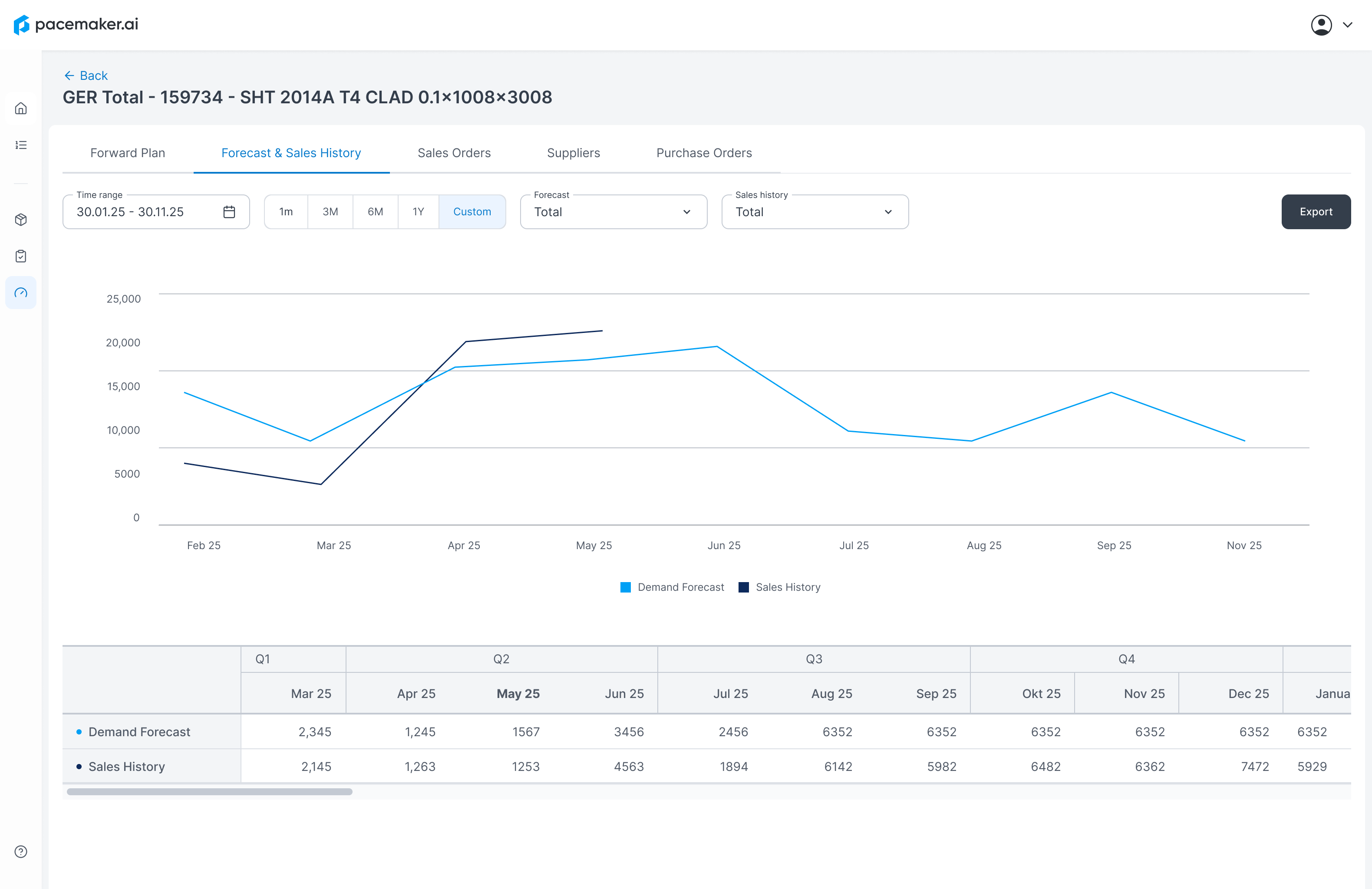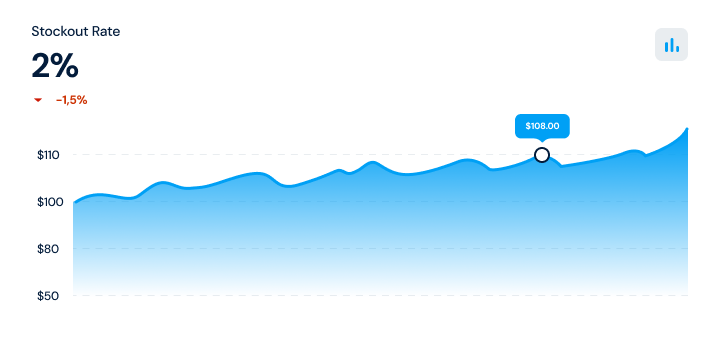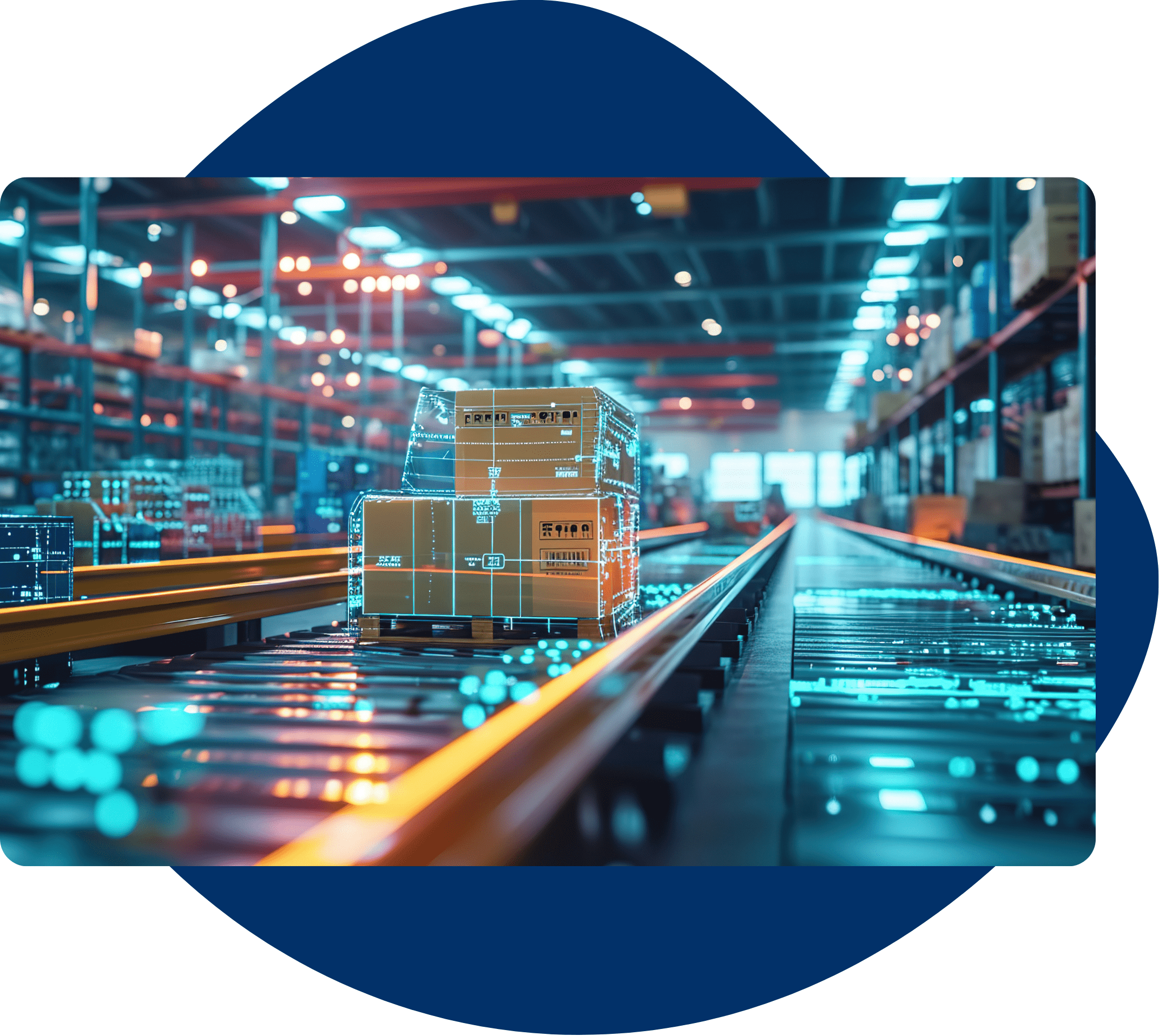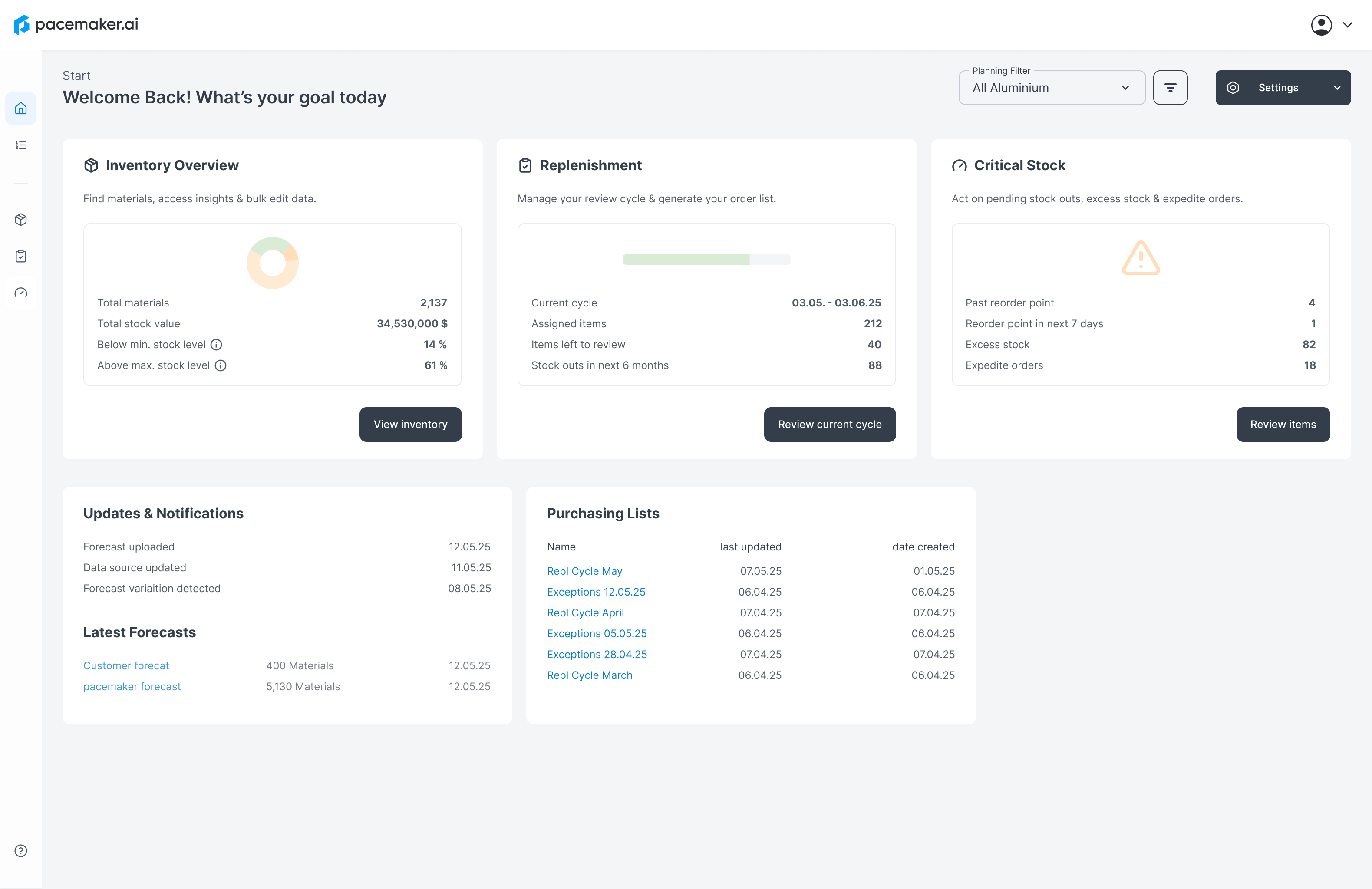How Intelligent Replenishment Frees Working Capital
Across all industries, Days Net Working Capital (DNWC) are rising by up to 20 percent. What may sound like an abstract metric means billions of euros tied up in supply chains in practice.
Manage your stocks proactively and efficiently: react to fluctuations in demand at an early stage, ensure availability and reduce storage costs at the same time.

Receive precise, data-based suggestions - automated and optimized on an individual basis
Identify surpluses and shortages at an early stage and manage stock levels proactively.
Precise replenishment times ensure timely restocking, minimize inventory costs, and guarantee availability.
Flexible individual item management: Our solution plans individually at item level, automatically creates order proposals and adapts them to new data in real time. Based on historical trends, seasonal patterns and external factors, a dynamic purchasing strategy is created that reacts flexibly to changes.
Alerts for critical repeat orders: The system automatically highlights particularly relevant items - e.g. in the event of delivery problems or spikes in demand. This allows planners to work in a more focused and efficient way instead of clicking through thousands of items.
Scenarios & transparent decisions: With clear dashboards, simulation functions and real-time transparency, you can maintain an overview at all times. The result: less hectic operations, better stock levels and significantly more robust security of supply - even in uncertain times.
Our replenishment software combines AI-based demand forecasts with dynamic inventory analysis. It continuously records your stock data, sales trends and delivery times, recognizes patterns and deviations - and derives automated recommendations for action. It works at item level, constantly adapts to new information and highlights critical products.



Higher predictive accuracy offers the potential to reduce the required inventory levels.

Precise replenishment times

Fewer days of stocking while maintaining the same delivery readiness

Inventory (net current assets)
EBIT improvement through reduced capital and inventory costs
.png)
.png)


Our replenishment software allows you to precisely control your inventory, reduce storage costs, and ensure the availability of your products. Benefit from optimized reordering that automates your warehouse processes and helps you use your resources more efficiently.
Your advantages:
Let's talk about your individual case. Book a free initial consultation.


In many companies, replenishment planning and restocking control is highly fragmented:
Our replenishment tool addresses exactly these issues: It automates daily replenishment planning, detects deviations in inventory replenishment early, and helps you make informed replenishment decisions – faster, more precisely, and with less effort.
Our replenishment tool analyzes your inventory, lead times, and demand data at the item level for optimal restocking planning. Using AI, the replenishment system forecasts future requirements and automatically suggests optimal replenishment timing and order quantities for inventory replenishment.Critical products are actively highlighted in the replenishment dashboard, so your purchasing department only needs to intervene in inventory replenishment where it's truly necessary. The replenishment system continuously adapts to new data – fully dynamic and self-learning for continuously optimized restocking control.
Modern replenishment differs significantly from traditional inventory planning:
The result: More precise inventory replenishment, reduced capital tie-up, and higher service levels through professional replenishment management.
Manual replenishment planning quickly reaches its limits – especially with many SKUs, volatile markets, and limited resources. Our intelligent replenishment solution offers:
This way you increase availability through precise replenishment, reduce inventory costs, and relieve your teams in inventory replenishment.
There are various proven replenishment strategies for optimal inventory replenishment:
Intelligent replenishment systems are particularly suitable for companies with complex inventory replenishment requirements:
Sectors such as retail, industry, consumer goods, logistics and spare parts management benefit in particular.
Our replenishment software is designed for seamless integration into existing IT landscapes. Replenishment solutions can be connected via APIs with ERP systems, warehouse management systems, and other enterprise systems. Replenishment implementation occurs without disrupting ongoing processes - the system works as an intelligent enhancement for optimized inventory replenishment in your existing supply chain infrastructure.
Across all industries, Days Net Working Capital (DNWC) are rising by up to 20 percent. What may sound like an abstract metric means billions of euros tied up in supply chains in practice.